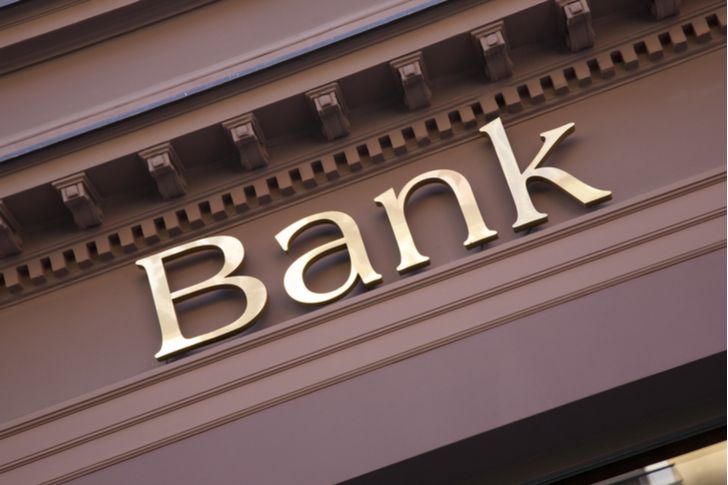Fourth-quarter earnings season commences in earnest this week. As is the case during every earnings season, the financial services sector, the third-largest sector weight in the S&P 500, gets the earnings ball rolling.
This week alone, more than 31% of the members of the Russell 1000 Financial Services Index step into the earnings confessional. Over the following three weeks, 43.76% of that benchmark’s member firms deliver fourth-quarter results.
On Monday, Citigroup Inc. (NYSE:C) kicked off this week’s parade of bank earnings, reporting a fourth-quarter profit of $4.2 billion, or $1.61 a share, up from $3.7 billion, or $1.28 a share, a year earlier. Analysts expected New York-based Citi to earn $1.55 per share.
On Jan 7, FactSet wrote:
“They S&P 500 is expected to report earnings growth of 11.4% for the fourth quarter. What is the likelihood the index will report an actual earnings increase of 11.4% for the quarter? Based on the average change in earnings growth due to companies reporting positive earnings surprises, it is likely the index will report earnings growth above 15% for Q4, but below the 25% growth reported in the previous three quarters.”
With a slew of marquee banks reporting earnings this week, some of the following related bank ETFs could be worth monitoring, particularly because expectations for the sector are low heading into this earnings season.
Financial Select Sector SDPR (XLF)

Expense ratio: 0.13% per year, or $13 on a $10,000 investment.
The Financial Select Sector SDPR (NYSEARCA:XLF) is not a dedicated bank ETF, but it is the largest financial services ETF on the market and it does allocate over 43% of its weight to bank stocks, more than double its second-largest sector weight.
Coming off a 13% loss last year, XLF could use the assistance of some better-than-expected earnings reports to see its near-term fortunes boosted. There are immediate catalysts with the potential to determine this sector ETF’s near-term performance. JPMorgan Chase & Co. (NYSE:JPM) and Wells Fargo Co. (NYSE:WFC), which combine for 16.49% of this bank ETF’s weight, report earnings this week.
This bank ETF has work to do to recapture investors’ confidence. As XLF slumped last year even amid four interest rate hikes by the Federal Reserve, investors yanked $5.35 billion from the fund, a total exceeded by just four other ETFs. Investors remain leery of this bank ETF as highlighted by outflows from XLF of more than $794 million last week.
SPDR S&P Bank ETF (KBE)

Expense ratio: 0.35% per year, or $35 on a $10,000 investment.
As its name implies, the SPDR S&P Bank ETF (NYSEARCA:KBE) is a dedicated bank ETF, putting it front and center among the primary options to consider amid this week’s onslaught of bank ETFs.
The $2.72 billion KBE tracks the S&P Banks Select Industry Index and holds 85 bank stocks across all three market capitalization segments (large, mid and small). This bank ETF’s holdings have a weighted average market value of $22.92 billion, indicating it tilts toward larger bank stocks.
KBE is an equal-weight ETF and none of its components command weights of more than 1.73%, indicating single stock risk is minimal with this bank ETF. That also means KBE needs the assistance of a lot of strong reports to deliver earnings season upside.
Invesco KBW Bank ETF (KBWB)

Expense ratio: 0.35% per year, or $35 on a $10,000 investment.
The Invesco KBW Bank ETF (NASDAQ:KBWB) is another dedicated bank ETF, but it features significant differences relative to the aforementioned KBE. KBWB tracks the widely followed KBW Nasdaq Bank Index and is a cap-weighted fund.
KBWB holds just 24 stocks and is dominated by the largest U.S. banks. That means this bank ETF is bound to be tested this week. Bank of America Corp. (NYSE:BAC), JPMorgan Chase and Wells Fargo combine for about 24% of KBWB’s weight.
As is the case with other bank ETFs, KBWB leans heavily toward the value factor because financial services stocks have been widely regarded as value plays for over a year. Over 78% of KBWB’s holdings are considered large- and mid-cap value plays.
iShares U.S. Financials ETF (IYF)
Expense ratio: 0,43% per year, or $43 on a $10,000 investment.
The $1.69 billion iShares U.S. Financial Services ETF (NYSEARCA:IYF) tracks the Dow Jones U.S. Financials Index and has a deeper bench than some rival bank ETFs as highlighted by a roster of 285 stocks. Like the aforementioned XLF, IYF is more of a diversified financial services ETF.
That said, IYF allocates 29.58% of its weight to bank stocks, making that the fund’s largest industry weight. Five of IYF’s top 10 holdings are bank stocks and all five of those names deliver fourth-quarter results this week. Many of the same stocks that dominate XLF and KBWB are important to IYF’s performance as well.
“Analysts are expecting a decent set of numbers, given an economy that seems in good shape based on holiday retail sales and employment numbers, subdued inflation and a more dovish Federal Reserve,” reports MarketWatch.
IYF is up 3.73% to start 2019.
Invesco S&P 500 Equal Weight Financials ETF (RYF)

Expense ratio: 0.40% per year, or $40 on a $10,000 investment.
The Invesco S&P 500 Equal Weight Financials ETF (NYSEARCA:RYF) can be seen as an equal-weight alternative to XLF, meaning no single stock charts the course for this bank ETF. RYF actually features lower bank exposure than XLF as insurance providers and capital markets are larger industry weights in the equal-weight fund than traditional banks.
Still, RYF has potency as a bank earnings season play. While it may be in the spotlight this week on par with KBWB or XLF, the equal-weight bank ETF could be worth considering in the latter stages of bank earnings season (next week and into early February).
RYF is another example of a bank ETF with value tendencies. Approximately 60% of the fund’s 68 holdings are classified as value stocks.
Todd Shriber owns shares of XLF.
